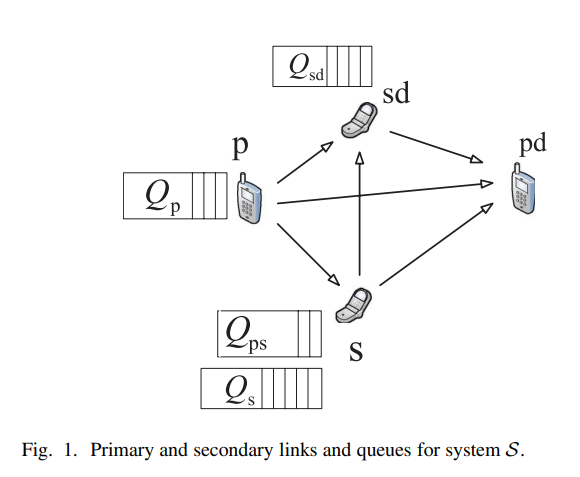

Maximum Secondary Stable Throughput of a Cooperative Secondary Transmitter-Receiver Pair: Protocol Design and Stability Analysis
In this paper, we investigate the impact of cooperation between a secondary transmitter-receiver pair and a primary transmitter on the maximum stable throughput of the primary-secondary network. Each transmitter, either primary or secondary, has a buffer for storing its own traffic. In addition to its own buffer, the secondary transmitter has a buffer for storing a fraction of the undelivered primary packets due to channel impairments. Moreover, the secondary destination has a relaying queue (buffer) for storing a fraction of the undelivered primary packets. In our proposed cooperative system, the secondary transmitter and the secondary destination increase the spectrum availability for the secondary packets by relaying the unsuccessfully transmitted packets of the primary transmitter. We consider two multiple-access strategies to be used by the secondary transmitter and the secondary destination to utilize the silence sessions of the primary transmitter. Numerical results demonstrate the gains of our proposed cooperative system over the noncooperation case and the systems when the secondary transmitter is the only cooperating node in the network. © 2016 IEEE.



